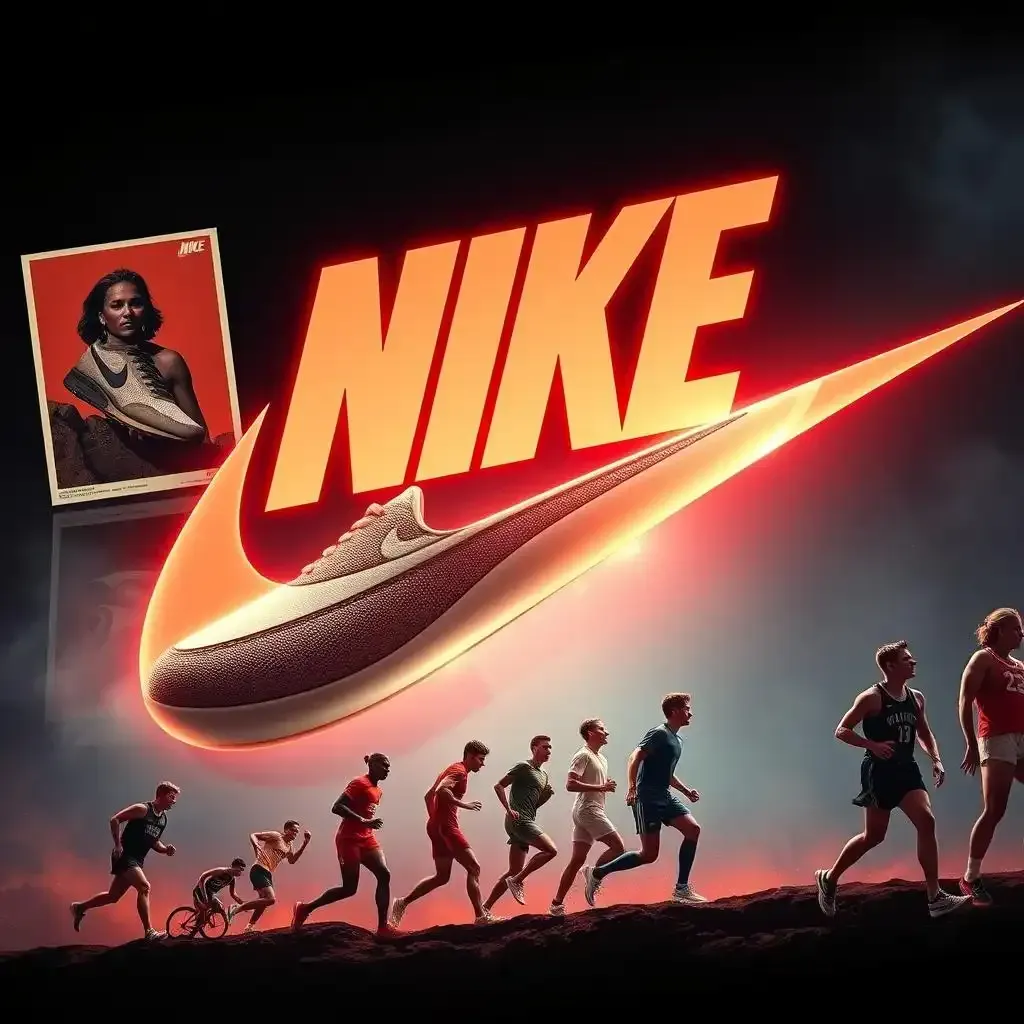Table of Contents
Ever wonder how a small company became a global powerhouse? Nike's story is one of relentless innovation, clever marketing, and a deep understanding of what athletes—and consumers—want. From its iconic swoosh logo to its groundbreaking product lines, Nike has consistently redefined the athletic apparel and footwear industry. This article will explore Nike's remarkable rise to global dominance, examining the key factors that have propelled its success and considering the challenges it faces in the ever-growing world of sports and fashion. Prepare to be inspired and informed as we explore into the world of Nike, a brand that has become synonymous with athletic excellence and cultural influence. Learn more about the history and future of Nike right here on yogapants.homes!
Aspect | Key Takeaway |
|---|---|
Origins | Started small, focused on athletic innovation. |
Growth | Strategic marketing, iconic branding, and product innovation fueled rapid expansion. |
Brand Identity | Strong association with athletic performance and cultural relevance. |
Challenges | Competition, changing consumer preferences, and economic factors. |
Future | Continued innovation, sustainability efforts, and engagement with a global audience. |

Nike: The Ultimate Athletic Brand
Nike's Rise to Global Domination
From Humble Beginnings to Global Icon
Hey there, fellow author! Let's talk Nike. It's an incredible story, right? I mean, who'd have guessed that a small company started by Phil Knight and Bill Bowerman in a waffle iron-inspired shoe would become a global giant? They started small, selling shoes out of the back of a car. Can you even imagine that? It's like a classic underdog story, only instead of a sports team, it's a shoe company! They focused on quality and innovation from the get-go. Their early shoes were really different – lighter, more comfortable, designed with runners in mind. They weren't just selling shoes; they were selling a dream. A dream of athletic achievement, of pushing limits, of being the best. And that resonates with people, even today.
Think about it: Nike didn't just sell shoes; they sold *an experience*. They understood that people don't just buy products; they buy into a brand. This was a huge part of their success, even back then. Early on, they started sponsoring famous athletes, and that helped their brand grow super fast. Michael Jordan's endorsement deal was a game-changer. Suddenly, Nike wasn't just a sports brand; it was a cultural phenomenon. They created a powerful image and connected it with athletic success. They tapped into people's desire to be better, faster, stronger. That's the magic of Nike's marketing strategy. It's not just about the shoes; it's about the aspiration. And it worked like a charm! It’s amazing how far they’ve come. Want to learn more about creating your own brand? Check out our guide on yoga pants for adults for inspiration.
Year | Key Event | Impact |
|---|---|---|
1964 | Blue Ribbon Sports founded | The beginning of the Nike process. |
1971 | Nike brand is launched | The iconic swoosh logo is introduced. |
1985 | Air Jordan 1 released | A pivotal moment in Nike's history. |
From Innovation to Global Market Domination
Nike's approach to innovation hasn't slowed down. They constantly come up with new technologies and designs. Think about things like Air Max, Flyknit, and self-lacing shoes. These aren't just improvements; they're game-changers! They make shoes lighter, more comfortable, and more responsive. It's like they're always one step ahead of the competition. Plus, their marketing is always on point. They know how to connect with their target audience. They use social media, celebrity endorsements, and powerful advertising campaigns to build their brand. They're not just selling shoes; they're selling a lifestyle. And that’s what keeps people coming back for more. It's a smart strategy, and it’s one of the reasons they’re so successful.
They also understand the importance of global expansion. Nike isn't just an American brand; it's a global brand. They have a presence in almost every country in the world. They adapt their products and marketing to different cultures and markets. This isn't just about selling more shoes; it's about building a global community of athletes and fans. And that's something truly special. It shows how Nike has grown from a small company to a global powerhouse. To learn more about how brands connect with their audience, check out our thoughts on yoga pants for teens.
- Constant innovation in shoe technology.
- Global marketing reach and cultural relevance.
- Adapting to different markets and consumer preferences.
The Nike Brand: Innovation and Marketing

The Nike Brand Innovation And Marketing
Okay, so visualize this: You're ten years old, right? And you're watching TV. Suddenly, you see this amazing commercial. A super-fast athlete, maybe a basketball player soaring through the air, or a runner breaking a record. And what are they wearing? Nike shoes and clothes, of course! That's the capability of Nike's marketing. They don't just sell stuff; they sell a feeling. A feeling of winning, of being unstoppable, of achieving greatness. It's like magic! They've teamed up with the coolest athletes, from Michael Jordan to Serena Williams, and those athletes become like superheroes in their own right. Kids want to be like them, and that means they want their gear. It's super clever!
But it's not just about the ads. Nike is always coming up with new and exciting products. Think about Air Max shoes—those things are like having bouncy castles for your feet! Or self-lacing shoes—who wouldn't want shoes that tie themselves? They're always experimenting, trying new materials, and pushing the boundaries of what's possible. It's like they're on a never-ending quest to create the most awesome athletic gear ever. They even have cool apps and websites that help you track your fitness progress. It's all part of their plan to get you involved and excited about sports and fitness. They've built a whole community around their brand, and that's really smart. Want to check out some super comfy pants for your own active life? Check out our guide on yoga pants for kids.
Nike Product | Innovation | Why it's cool |
|---|---|---|
Air Max | Air cushioning | Super comfy and bouncy! |
Self-lacing shoes | Automatic lacing | No more tying laces! |
Flyknit | Lightweight, breathable fabric | Feels like you're wearing nothing! |
And guess what? Nike isn't just about making awesome shoes. They're also really good at making people *feel* good about themselves. They use positive messages in their ads. They show people from all walks of life achieving their goals. It's inspiring! They're not just selling athletic gear; they're selling confidence, motivation, and the belief that you can do anything you set your mind to. That's powerful stuff, and it's a big part of why they're so successful. It's more than just buying a pair of sneakers; it's joining a movement.
They're also really smart about how they use social media. They're all over Instagram, TikTok, and other platforms. They post awesome videos, fun photos, and inspiring stories. It’s a great way to stay connected with their fans and share their brand's message. They even run challenges and competitions, getting people involved and sharing their Nike experiences with others. It's all about creating a community and making people feel like they're part of something special. If you need comfy clothes for your own activities, you might want to check out our guide.
- Celebrity endorsements
- Inspiring advertising campaigns
- Strong social media presence
Nike's Future: Challenges and Opportunities

Nikes Future Challenges And Opportunities
Staying Ahead of the Curve
So, Nike's been killing it for ages, right? But the world changes fast. New brands pop up all the time, trying to steal their thunder. Think of all those cool, smaller companies making unique shoes and clothes. It's like a giant game of tag, and Nike has to keep running to stay ahead. They need to keep innovating, coming up with even cooler stuff than before. They can't just rest on their laurels; they need to keep surprising us. It's a constant race, and it's exciting to see what they'll come up with next. Keeping up with trends is super important, too. What's cool today might be so yesterday tomorrow! They need to know what the kids (and adults!) are into and make sure they're offering what people want.
And it's not just about shoes anymore. People are way more conscious about where their stuff comes from. They care about the environment and how companies treat their workers. Nike needs to show that they're doing things the right way, being responsible and sustainable. It's not enough to just make awesome products; they need to make them ethically and sustainably. This is a huge deal, and it's something they have to keep working on. Want to learn more about choosing ethical and sustainable clothing? Check out our guide on eco-friendly yoga pants.
Challenge | Nike's Response |
|---|---|
Increased competition | Continuous innovation and marketing |
Changing consumer preferences | Adapting to trends and demands |
Sustainability concerns | Ethical sourcing and manufacturing |
The Strength of Global Reach
Nike is HUGE. I mean, seriously HUGE. They're in almost every country. That's amazing! But being a global brand isn't easy. Different cultures have different tastes, different needs. Nike has to understand all those differences and make sure their products and marketing work in every place. It’s like trying to make a pizza everyone loves – you need to use the right ingredients for every taste! They need to be sensitive to local customs and preferences. A cool ad in one country might flop in another. It’s a tricky balancing act, but they seem to be doing a pretty good job.
And then there's the whole economic thing. Sometimes the economy's good, and sometimes it's not so good. When things get tough, people might not buy as many expensive shoes. Nike has to be smart about managing its money and making sure it can survive even when things are rocky. It's like having a really strong tree – it can weather any storm! They also need to keep an eye on global events and how they might impact their business. Things like wars, pandemics, or natural disasters can have a huge effect on the economy, and Nike needs to be prepared for anything. Check out our tips on staying active during tough times with our guide on .
- Adapting to different cultural preferences
- Managing economic fluctuations
- Navigating global events and risks
Embracing the Future
Technology is changing everything, and Nike needs to keep up. Think about all the cool tech stuff in their shoes and clothes. They're using data and AI to make better products and understand what customers want. It's like having a super-smart robot helping them design the perfect shoes! They need to keep investing in research and development, staying at the forefront of innovation. This is crucial for maintaining a competitive edge and meeting growing consumer expectations. But it's not just about the tech; it's also about using technology to connect with their customers in new and exciting ways. They need to use social media, apps, and other digital tools to build a strong community of fans and keep them engaged.
Finally, Nike has to think about the future. What will the world of sports and fashion look like in ten years, twenty years? They need to be ready for anything, adapting to new trends, and coming up with creative solutions to future challenges. It's like being a superhero, always one step ahead of the villains! They need to think about sustainability, ethical practices, and how they can make a positive impact on the world. It's not just about making money; it's about making a difference. For more on staying active and healthy, check out our guide on .
Final Thought
Nike's trip is a testament to the capability of vision, innovation, and a deep relationship with its consumers. While challenges remain, Nike's adaptability and commitment to pushing boundaries suggest a continued reign at the top of the athletic apparel world. Its future will likely be defined by its ability to manage developing consumer preferences, technological advancements, and global economic shifts. The next chapter in the Nike story promises to be as compelling as the last.
